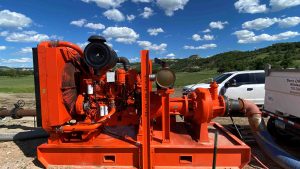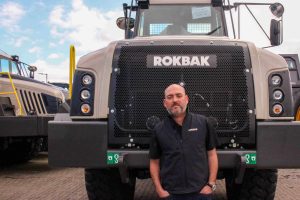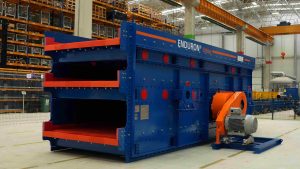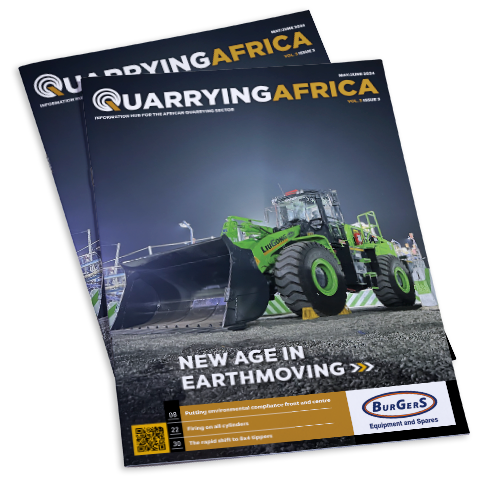Aggregates by their very nature are high-volume, low-cost materials. For quarries to mine and process profitably, they need to watch their cost base and drive efficiencies in every aspect of their operations. This was the overarching message from Quarrying Africa’s recent visit to PPC Laezonia’s aggregate quarry, where cost-cutting initiatives have helped counter several operational challenges on site.
A key challenge at PPC Laezonia is the complex geology, which contains five rock types in one pit. The primary rock type is amphibolite, which occurs together with migmatite, schist, weathered and competent granite.
With a relative density of 2,9, amphibolite is a coarse-grained metamorphic rock which is known for its hardness to blast and process. Migmatite, with a relative density of about 2,7, is an equally tough rock to crack.
Mining amphibolite is no walk in the park, says Arthur Ndindani, General Manager PPC Aggregate Quarries. The hard nature of the rock presents a lot of cost-related challenges from a blasting and processing perspective. It is hard to break and is unforgiving on wear items such as crusher liners, which increases the cost of operation quite significantly.
In fact, says Ndindani, PPC Laezonia has traditionally been famous for being one of the costlier quarries to operate. There is one other quarry in the Gauteng region with a comparably tough rock; an andesite operation operated by a major competitor.
However, PPC Laezonia also leverages these geological challenges to produce highly sought-after material. Despite its hardness to process, amphibolite remains one of the operation’s key competitive edges, says Innocent Magagula, works manager at PPC Laezonia. Due to its high uniaxial compressive strength, the rock has traditionally been the preferred choice by the road-making industry. Because it doesn’t weather quickly, it makes durable and long-lasting roads.
While the different rock types on the same bench are a nightmare from a mining perspective, they also allow the quarry to produce a wide variety of materials to cater for different market segments, from road-making to roof tile production and concrete products manufacturing (CPM).
To change the fortunes of the quarry, the management team reviewed some of the old processes in 2019. This resulted in the orchestration of a number of successful cost-cutting initiatives which have put PPC Laezonia on a completely different trajectory over the past three years. The cost-cutting measures have been implemented to enable the quarry to extract each rock type efficiently to improve the cost per tonne of each product.
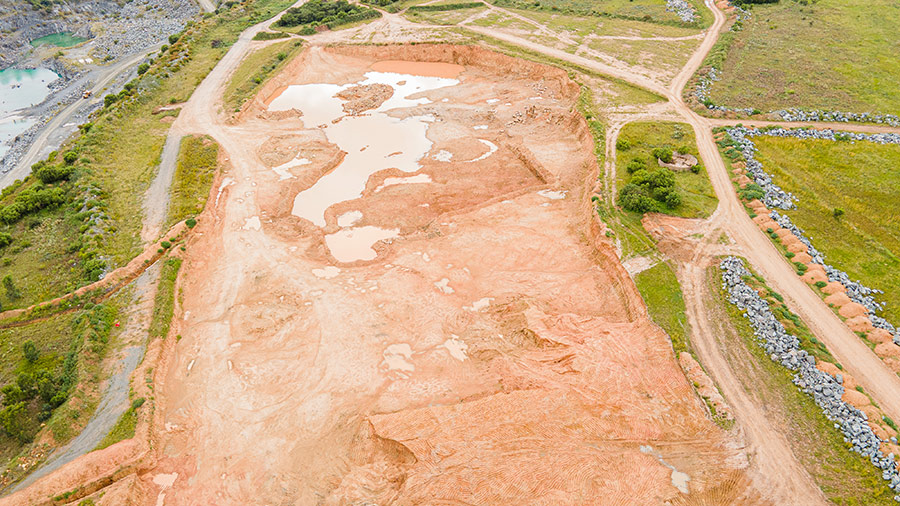
Weathered granite
Used for the production of two types of sand, river sand and building sand, the weathered granite rock has traditionally been mined in the main pit. At other operations, depending on product lines, this type of rock would normally be discarded as overburden material. At PPC Laezonia, it is competent enough to be processed as sand material. In fact, says Magagula, the quarry prides itself on its unique -5 mm washed river sand, which is used for the manufacturing of roof tiles.
“Previously, we used to drill and blast this material in the main pit,” says Ndindani. “This was done mainly to expose the amphibolite rock, which at the time was the main demand driver. However, from around 2019, we saw a big decline in the demand for road stone. We looked at our deposit and identified an opportunity to develop a separate sand pit on the southern side of the existing mining area. The deeply weathered granite in this area is free-dig material, which eliminates the need to drill and blast. We just dig with an excavator and load the material for processing. It’s such a huge cost-saving for us.”
When developing the new sand pit, the team also considered the shortest haul route possible, from the pit to the sand-processing plant, which was another key initiative in the quest to cut operational costs. Initially, the haul distances were about 800-900 m from the pit to the processing plant. Since the pit has advanced further over recent years, the haul distances are now about 1-1,2 km.
“The short haul distances translate into reduced diesel burn on site, which drops our litres of fuel per tonne significantly. In addition, the free-dig material comes with a relative density of about 2,2, which makes it easier to process. That, together with the short haul distances, translates into increased productivity,” explains Magagula. “Previously, the primary plant on sand mode was running at 250 tonnes per hour (tph). Since the introduction of the free-dig material, we have increased production to about 350 tph.”
Processing free-dig material has also resulted in the extended life of jaw liners, translating into reduced maintenance costs of the sand plant. Having previously changed the jaw liners after every four months, the maintenance team now only changes the same liners about once per year. This is a massive cost saving, says Ndindani, because jaw liners are generally an expensive wear item.
In terms of production, the weathered granite is processed at the sand plant. The feed size ranges from fines to 700 mm. This is fed into a primary Osborn 3042 jaw crusher with a closed side setting of 80 mm. From the jaw, there are two conveyor belts running up to the sage pile. Underneath the sage pile there is a conveyor that takes material to the tertiary plant. Here, there is a screen that takes out building sand (-3 mm), which is used mostly in the construction industry.
From here, anything above -3 mm goes upstream for washing to produce the flagship -5 mm river sand, which is predominantly used for making roof tiles. For shaping purposes, the sand is also put through a special vertical shaft impactor (VSI) from Techroq.
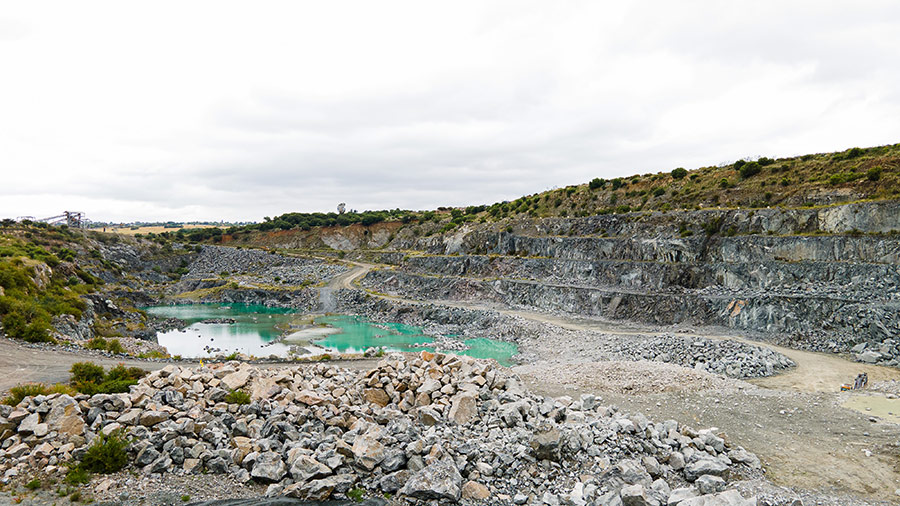
Migmatite
The migmatite material is predominantly used to produce sub-base material (G1 and G5) for the road industry. This is mined from the main pit. Like the amphibolite, migmatite is a highly metamorphised rock, which makes it hard to process.
Traditionally, fragmentation has always been a major concern. The high compressive strength of the rock proved too much to handle for the pyrotechnic blasting technique, the shock tube, previously employed at the quarry. Consequently, the blast process would not achieve the required fragmentation, and the blasting team would always end up with “a farm of boulders” on the ground, which called for costly secondary blasting or further mechanical breaking of the rock using an excavator equipped with a hydraulic hammer.
In fact, says Magagula, the quarry previously had a permanent excavator with a hydraulic hammer deployed to break oversize material in the pit. Depending on quantity, the cost of breaking oversized material using mechanical means can be up to four times higher than the cost of an initial blast. The cheapest way of breaking rock, stresses Ndindani, is through explosives.
To get the better of poor fragmentation, the quarry migrated from shock tube to electronic blasting in 2019. The preferred supplier is BME, which supplies its flagship Titanium electronic blast detonation system. Despite the high upfront cost of electronic compared to shock tube blasting, Magagula says the benefits of good fragmentation on the downstream processes such as load and haul as well as crushing are massive and outweigh the initial capital outlay.
“BME is our preferred explosives supplier. Since testing the company’s Titanium electronic blast initiation system at our sister quarry, Mooiplaas, we have never looked back,” says Magagula. “We have seen a very big change in terms of fragmentation of the muckpile.”
Improved fragmentation has a massive positive impact on the downstream processes, including better penetration when loading with an excavator, which in turn improves the loading rate and cycle times. With the introduction of electronic blasting, the quarry has seen a drastic improvement in its cycle times. At the plant, they no longer feed oversize material into the jaw crusher, which improves the tph, while reducing the wear rate of jaw liners. Production of migmatite material has since jumped from the previous 250 tph to 280 tph.
In terms of the process, the migmatite run of quarry material is fed into an Osborn 4248 jaw crusher with a closed side setting of 132 mm. It then goes through a secondary crusher, a Symons 5½, before reporting to screen one. From here, the material is sent to another Symons crusher, before it is sent to screen two for final sizing.
“The migmatite occurs in the same bench as the amphibolite and weathered granite. Previously, the mining team resorted to slot mining to expose the required rock at a given time, which called for small and isolated blasts. Because explosives are expensive to buy and transport to site, this approach proved costly,” says Ndindani. “From 2019, we changed the strategy and now blast the whole face and load selectively because the demarcations of each rock type are very clear.”
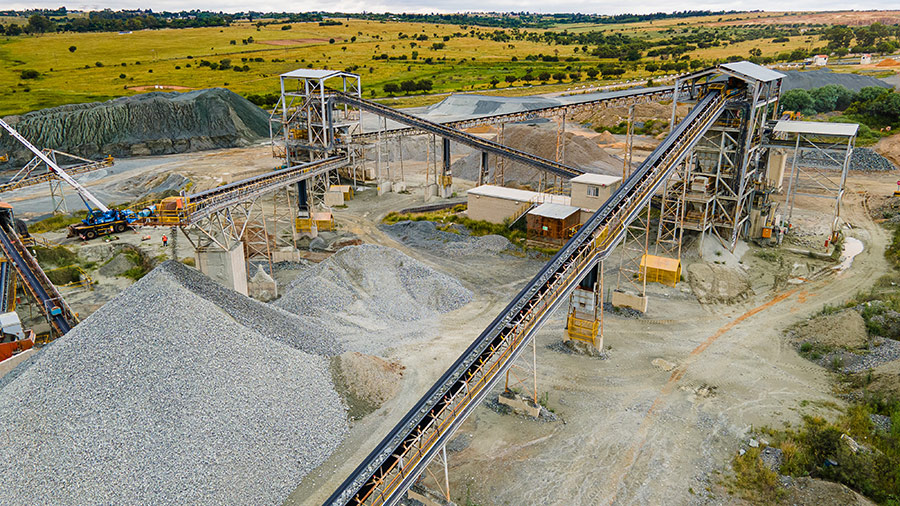
Amphibolite
The amphibolite rock is used to produce road stone and aggregates at large. The material is produced at the same plant as the migmatite. It goes through the same Osborn 4248 jaw crusher before reporting to the secondary Symons crusher. It then goes through two screens before it reports to the sage pile as 80 mm material. From here, material is fed to the road stone plant via a tunnel feeder underneath the sage pile.
Material then goes through a series of screens before it gets to a tertiary crusher, a Sandvik CH440. From here, it is fed into a Techroq VSI for shaping. Different end sizes are produced, including 19 mm (mostly for readymix concrete), 13 mm (road stone), 9 mm and 6,7 mm. These products are all washed to remove impurities, which increases their value in the market. The process also produces washed crusher sand (-5 mm), which is largely supplied to CPM and asphalt markets.
Here, the migration from shock tube to electronic blasting has also yielded massive gains. Good fragmentation allows for choke feeding of crushers, which in turn results in increased production. In fact, production of amphibolite material has increased from around 300 tph to 330 tph.
Meanwhile, maintenance costs in the plant have significantly gone down, mainly due to increased life of liners. For example, liner life on the secondary Symons crusher has improved by 100% from the previous three to six months.
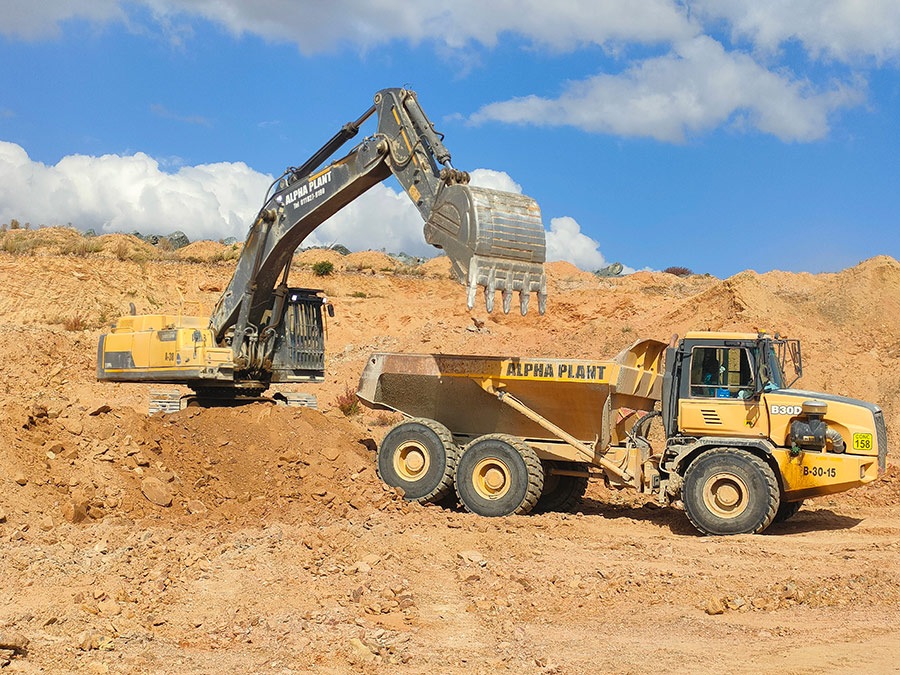
“On the primary jaw crusher, we would previously change the swing liner every six months, while the fix liner would have to be turned. We are now changing the swing liner every eight months,” explains Magagula.
Apart from winning on the cost front, PPC Laezonia has achieved a safety milestone, reaching 13 years of no Lost Time Injury (LTI) in 2022. The most crucial step in the prevention of accidents has been the focus on proper training of all employees who work at the quarry.
“We also encourage proper risk assessments before doing any task on site. All the employees are also trained in every aspect of their jobs, from code of practices to load and haul. The quarry foreman is also a holder of an EMS certificate, which speaks directly to our uncompromising attitude towards safety,” concludes Magagula.

